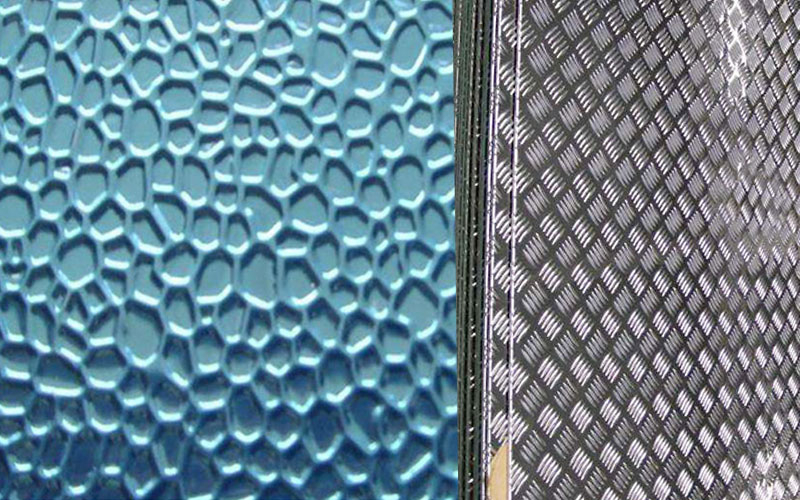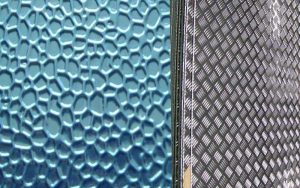Currently Empty: $0.00
Aluminum Tread Plate Classifications

The first classification method for aluminum tread plate is by aluminum content. People refer to aluminum chequer sheet of the highest aluminum content (99.9% and above) as super pure sheet, and of 99% aluminum content as pure sheet. There are also aluminum alloy plates, which are made of aluminum and a second metal like copper, manganese, silicon etc. Some sheets contain more than two metals, and they are called composite sheets. By thickness there are thin aluminum tread plates (0.15-2.0mm), regular plates (2.0-6.0mm), medium thick plates (6.0-25.0mm) and thick plates (25-200mm). Aluminum checker plate patterns include 5 bars, diamond, pebble, stucco, willow leaves etc. The first two serve as the most widely used anti-slip plates in elevators, vehicles, planes, ships etc, and the others are usually applied as packing materials owing to excellent decorative effect. The sheets of all patterns can be further painted with any given color.

In accordance with the industrial standards, the thickness of aluminum tread plates can be 2.5mm, 3.0mm, 3.5mm, 4.0mm, 4.5mm, 5.0mm, 5.5mm, 6.0mm, 7.0mm and 8.0mm. The width must be between 600mm and 1800mm, and 50mm is regarded as the value gap between two adjoining widths. For example, there are 600mm, 650mm, 700mm, 750mm, 800mm etc. If you want the sheet a littler wider than 600mm, you can only make it 650mm rather than a random width like 620mm or 630mm. In the same way, the standard length of aluminum checker plates must be from 2000mm to 12000mm with 100mm as a gap value. If you want the plate a little longer, you can only add by 100mm, 200mm or 300mm etc.

